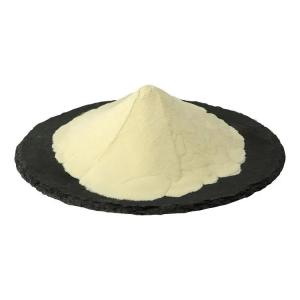News list
News Center
Hot Product
News
Phosphoric acid and essential nutrient literacy
Time:2025-10-28
Nutrient literacy—the understanding of what our bodies need and where those nutrients come from—is fundamental to making informed dietary choices. Among the essential nutrients, phosphorus stands out as a critical yet often misunderstood mineral. It is vital for bone health, energy production (ATP), and cellular function. However, the modern diet has transformed our relationship with phosphorus, primarily through the widespread use of phosphoric acid as a food additive. Understanding the distinction between naturally occurring phosphorus and added phosphoric acid is a crucial component of essential nutrient literacy in the 21st century.
The Science of Phosphorus: Natural vs. Added
Phosphorus is naturally present in many whole foods: dairy products, meat, poultry, fish, eggs, legumes, nuts, and seeds. In these foods, phosphorus is bound within organic compounds (like phytates in plants or proteins in meat), and its absorption by the body is carefully regulated. This natural form comes packaged with other essential nutrients, such as calcium, magnesium, and protein, creating a balanced nutritional profile.
In contrast, phosphoric acid (H₃PO₄) is an inorganic additive used primarily in carbonated colas and various processed foods. Its role is not nutritional but functional: it provides tartness, acts as a preservative, and stabilizes pH. The phosphorus in phosphoric acid is in the form of inorganic phosphate, which is absorbed by the body much more rapidly and completely—nearly 100%—compared to the 40-60% absorption rate of phosphorus from plant sources. This high bioavailability, while efficient, can lead to excessive intake when consumption of processed foods and beverages is high.
Why Phosphoric Acid Challenges Nutrient Literacy
The confusion arises because phosphorus is listed as an essential nutrient on food labels, yet the source and form matter immensely for health outcomes. This creates a significant gap in nutrient literacy:
The "Phosphorus is Good" Oversimplification: Many consumers know phosphorus is necessary but don't realize that how they consume it can have vastly different effects. Drinking a cola provides a large, rapid influx of inorganic phosphate without the accompanying nutrients found in whole foods, potentially disrupting metabolic balance.
Hidden in Plain Sight: Phosphoric acid is often listed in ingredient panels, but its presence is easily overlooked or misunderstood. Consumers may not connect "phosphoric acid" with their daily phosphorus intake or its potential health implications.
Misleading Health Claims: Products like diet colas may be marketed as "sugar-free" or "low-calorie," leading consumers to believe they are a healthier choice, while the high phosphoric acid content remains a hidden concern for bone and cardiovascular health.
The Health Implications: Why the Distinction Matters
Research highlights the risks of excessive inorganic phosphate intake from additives like phosphoric acid:
Mineral Imbalance: High phosphate levels can trigger hormonal responses (e.g., increased fibroblast growth factor 23 - FGF23) that disrupt calcium and vitamin D metabolism, potentially weakening bones over time.
Cardiovascular Risk: Elevated phosphate levels, even within the normal range, are associated with vascular calcification and increased risk of heart disease.
Kidney Strain: The kidneys must work harder to excrete excess phosphate. Chronic high intake can burden kidney function, particularly in susceptible individuals.
These risks underscore that nutrient literacy must go beyond simply knowing that a nutrient is essential; it requires understanding how it is consumed and in what context.
Building Better Nutrient Literacy: Empowering Informed Choices
To navigate the modern food landscape, individuals need enhanced nutrient literacy regarding phosphorus and phosphoric acid:
Educate on Forms and Sources: Public health messaging and nutrition education should clearly differentiate between natural phosphorus in whole foods and added inorganic phosphates in processed items.
Read Labels Critically: Consumers should be encouraged to look beyond the Nutrition Facts panel and scrutinize the ingredient list for "phosphoric acid," "phosphate," and other phosphate additives.
Promote Whole Foods: Emphasize diets rich in unprocessed foods where nutrients exist in their natural, balanced forms.
Question Marketing Claims: Understand that "low-sugar" does not automatically mean "healthy," especially when other additives like phosphoric acid are present.
Conclusion: Knowledge as the Foundation of Health
Essential nutrient literacy is not just about memorizing vitamins and minerals; it's about understanding the complex interplay between food, additives, and physiology. Phosphoric acid serves as a powerful case study in this regard. It illustrates how a single additive can distort our intake of an essential nutrient, leading to unintended health consequences. By deepening our understanding of the difference between natural phosphorus and added phosphoric acid, we empower ourselves to make truly informed choices—choosing foods that nourish the body in harmony, rather than overwhelming it with isolated, highly bioavailable compounds. In the pursuit of health, knowledge of the source is just as vital as knowledge of the nutrient itself.
The Science of Phosphorus: Natural vs. Added
Phosphorus is naturally present in many whole foods: dairy products, meat, poultry, fish, eggs, legumes, nuts, and seeds. In these foods, phosphorus is bound within organic compounds (like phytates in plants or proteins in meat), and its absorption by the body is carefully regulated. This natural form comes packaged with other essential nutrients, such as calcium, magnesium, and protein, creating a balanced nutritional profile.
In contrast, phosphoric acid (H₃PO₄) is an inorganic additive used primarily in carbonated colas and various processed foods. Its role is not nutritional but functional: it provides tartness, acts as a preservative, and stabilizes pH. The phosphorus in phosphoric acid is in the form of inorganic phosphate, which is absorbed by the body much more rapidly and completely—nearly 100%—compared to the 40-60% absorption rate of phosphorus from plant sources. This high bioavailability, while efficient, can lead to excessive intake when consumption of processed foods and beverages is high.
Why Phosphoric Acid Challenges Nutrient Literacy
The confusion arises because phosphorus is listed as an essential nutrient on food labels, yet the source and form matter immensely for health outcomes. This creates a significant gap in nutrient literacy:
The "Phosphorus is Good" Oversimplification: Many consumers know phosphorus is necessary but don't realize that how they consume it can have vastly different effects. Drinking a cola provides a large, rapid influx of inorganic phosphate without the accompanying nutrients found in whole foods, potentially disrupting metabolic balance.
Hidden in Plain Sight: Phosphoric acid is often listed in ingredient panels, but its presence is easily overlooked or misunderstood. Consumers may not connect "phosphoric acid" with their daily phosphorus intake or its potential health implications.
Misleading Health Claims: Products like diet colas may be marketed as "sugar-free" or "low-calorie," leading consumers to believe they are a healthier choice, while the high phosphoric acid content remains a hidden concern for bone and cardiovascular health.
The Health Implications: Why the Distinction Matters
Research highlights the risks of excessive inorganic phosphate intake from additives like phosphoric acid:
Mineral Imbalance: High phosphate levels can trigger hormonal responses (e.g., increased fibroblast growth factor 23 - FGF23) that disrupt calcium and vitamin D metabolism, potentially weakening bones over time.
Cardiovascular Risk: Elevated phosphate levels, even within the normal range, are associated with vascular calcification and increased risk of heart disease.
Kidney Strain: The kidneys must work harder to excrete excess phosphate. Chronic high intake can burden kidney function, particularly in susceptible individuals.
These risks underscore that nutrient literacy must go beyond simply knowing that a nutrient is essential; it requires understanding how it is consumed and in what context.
Building Better Nutrient Literacy: Empowering Informed Choices
To navigate the modern food landscape, individuals need enhanced nutrient literacy regarding phosphorus and phosphoric acid:
Educate on Forms and Sources: Public health messaging and nutrition education should clearly differentiate between natural phosphorus in whole foods and added inorganic phosphates in processed items.
Read Labels Critically: Consumers should be encouraged to look beyond the Nutrition Facts panel and scrutinize the ingredient list for "phosphoric acid," "phosphate," and other phosphate additives.
Promote Whole Foods: Emphasize diets rich in unprocessed foods where nutrients exist in their natural, balanced forms.
Question Marketing Claims: Understand that "low-sugar" does not automatically mean "healthy," especially when other additives like phosphoric acid are present.
Conclusion: Knowledge as the Foundation of Health
Essential nutrient literacy is not just about memorizing vitamins and minerals; it's about understanding the complex interplay between food, additives, and physiology. Phosphoric acid serves as a powerful case study in this regard. It illustrates how a single additive can distort our intake of an essential nutrient, leading to unintended health consequences. By deepening our understanding of the difference between natural phosphorus and added phosphoric acid, we empower ourselves to make truly informed choices—choosing foods that nourish the body in harmony, rather than overwhelming it with isolated, highly bioavailable compounds. In the pursuit of health, knowledge of the source is just as vital as knowledge of the nutrient itself.


 CN
CN





